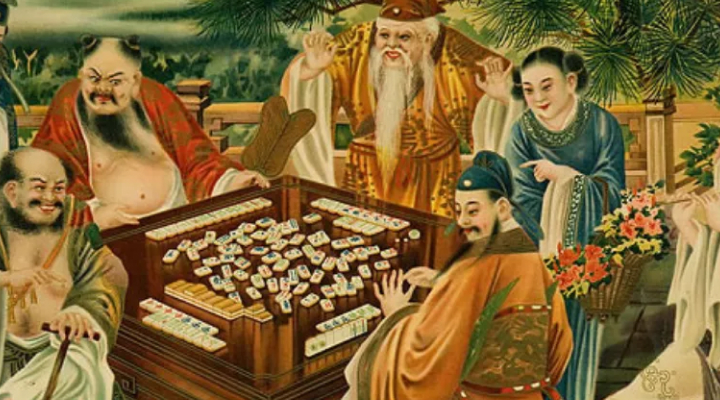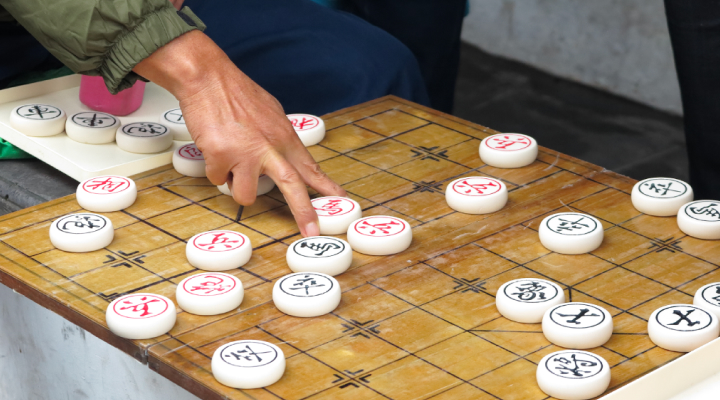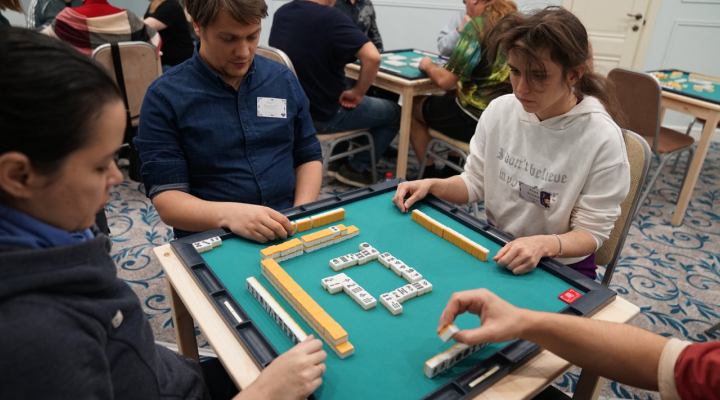Table of Contents
A Tale from Ancient China
Mahjong’s conception took place in China over two thousand years ago, originating in the Court of Wu. The game is rumored to have been invented by one of the ladies of the royal family, who delicately carved figurines by hand, etching each design within bamboo and ivory backings.

Mahjong’s Evolution: From Royal Exclusive to Public Pastime
In the times that followed the origin, Mahjong became exclusive to the royal family and upper aristocratic families. Playing Mahjong as a commoner meant death, as the working class was considered unworthy of playing a game invented by the royal family.

Liberation and Mahjong’s Global Journey
Eventually, the ban on Mahjong was lifted around 500 A.D., allowing the major populace to play without fear of a death penalty. This liberation also marked the export and import of Mahjong into other populations, contributing to its popularity in countries such as England and Australia.
Mahjong’s Global Spread: A Cultural Exchange
The entrance of Mahjong into American culture took place in the early 1900s when Joseph Babcock, an American living in Shanghai, brought the game over. Babcock translated the tiles into English and marketed it under the pronunciation “Mah-jongg.”

Mahjong in America: Rise, Fall, and Resurgence
Following Mahjong’s introduction into the United States, the game picked up popularity but tapered off at the end of the 1930s. In the last 20 years, Mahjong has experienced a resurgence, thanks to the revival of board games as an alternative to video games or television.
Mahjong’s Contemporary Popularity: Tournaments and References
Now, Mahjong has found increasing popularity, with professional tournaments held across the country. The amateur player can enjoy a plethora of opportunities to play Mahjong in this current state of the game’s popularity.

“Ma Jiang”: A Contemporary Reference
Recently, the more popular reference surfacing towards Mahjong is “Ma Jiang,” the Mandarin-speaking populace’s pronunciation. The translation of the game name of Mahjong holds the meaning of “Sparrow.”
Exploring Mahjong’s Diverse Variations
As there are many variations of the game, players should familiarize themselves with editions they enjoy playing. Some of the editions include the Classical Chinese version, the first Mahjong version introduced into the United States, and the Japanese version, complete with standardized rules and Mahjong video games.

The Western Classical Version by Babcock
The Western Classical version of Mahjong, introduced by Babcock in the early 1900s, holds a unique place in American Mahjong history, featuring a new set of rules and subtle differences due to translations.
Mahjong’s Future: A Game with Intelligent Design
Thanks to the initial introduction of Mahjong in the 1900s, the game has seen a steady rise in American players appreciating Mahjong’s intelligent design. The future promises more Mahjong, ensuring its continued presence and growth among players.